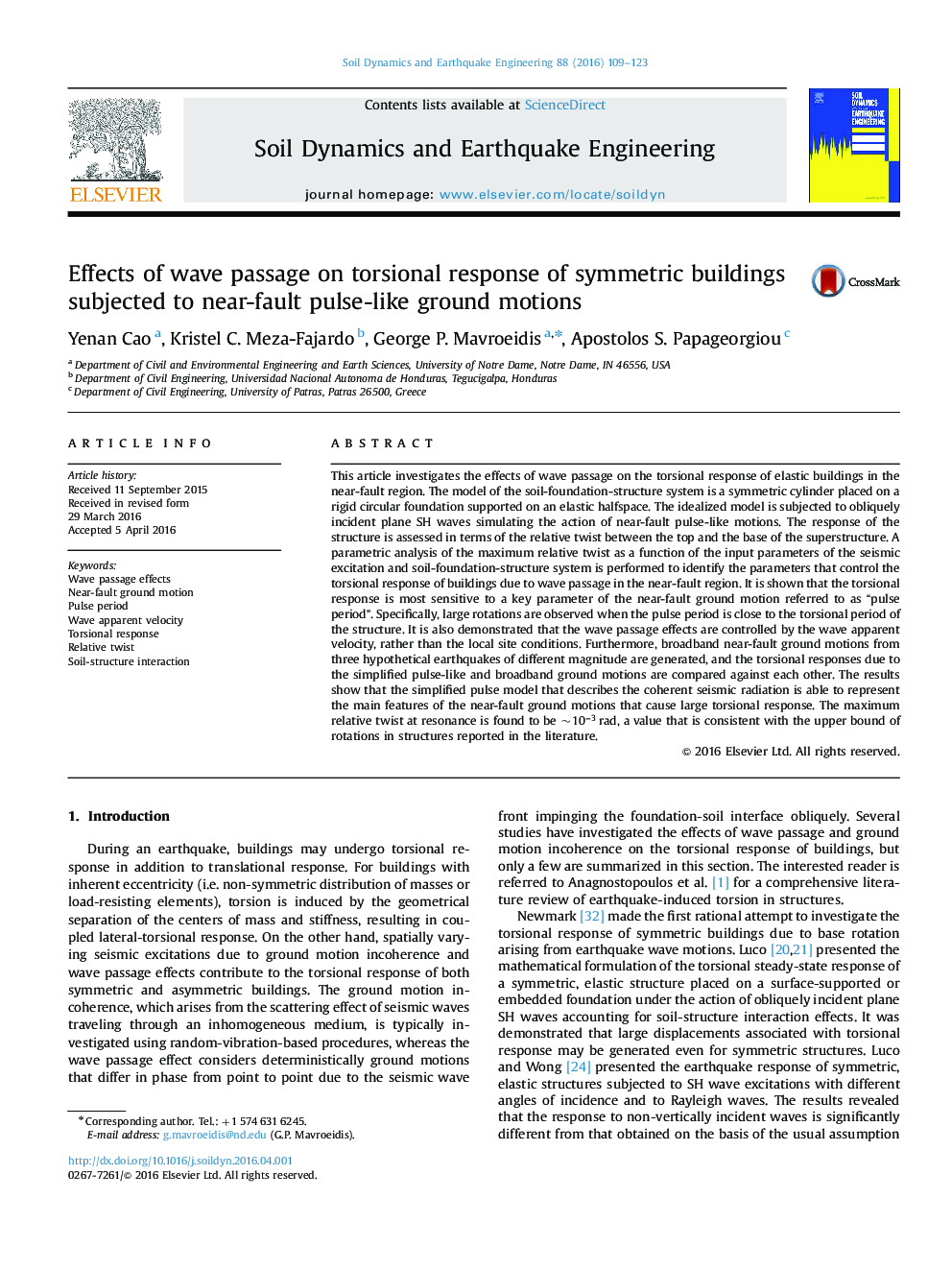| Article ID | Journal | Published Year | Pages | File Type |
|---|---|---|---|---|
| 303841 | Soil Dynamics and Earthquake Engineering | 2016 | 15 Pages |
•The torsional response of symmetric buildings due to wave passage in the near-fault region is investigated.•The resonance response occurs when the pulse period is close to the torsional period of the building.•Wave passage effects are controlled by the wave apparent velocity, rather than the local site conditions.•Simplified pulse models can represent broadband near-fault motions for large torsional response.•The maximum relative twist at resonance is found to be ~10−310−3 rad.
This article investigates the effects of wave passage on the torsional response of elastic buildings in the near-fault region. The model of the soil-foundation-structure system is a symmetric cylinder placed on a rigid circular foundation supported on an elastic halfspace. The idealized model is subjected to obliquely incident plane SH waves simulating the action of near-fault pulse-like motions. The response of the structure is assessed in terms of the relative twist between the top and the base of the superstructure. A parametric analysis of the maximum relative twist as a function of the input parameters of the seismic excitation and soil-foundation-structure system is performed to identify the parameters that control the torsional response of buildings due to wave passage in the near-fault region. It is shown that the torsional response is most sensitive to a key parameter of the near-fault ground motion referred to as “pulse period”. Specifically, large rotations are observed when the pulse period is close to the torsional period of the structure. It is also demonstrated that the wave passage effects are controlled by the wave apparent velocity, rather than the local site conditions. Furthermore, broadband near-fault ground motions from three hypothetical earthquakes of different magnitude are generated, and the torsional responses due to the simplified pulse-like and broadband ground motions are compared against each other. The results show that the simplified pulse model that describes the coherent seismic radiation is able to represent the main features of the near-fault ground motions that cause large torsional response. The maximum relative twist at resonance is found to be ~10−310−3 rad, a value that is consistent with the upper bound of rotations in structures reported in the literature.
